Copywriting Best Practices for Enterprise Customers
So, the first question:
I would like to ask about copywriting best practices. When you are writing for enterprise customers? Where the sales cycles are long and the decision is not made impulsively a lot of the copywriting tricks like FOMO, scarcity don’t really apply in my experience. So, what can you suggest for this?
Joel Klettke: Yeah, so when it comes to enterprise companies a lot of it is understanding what that nurture cycle looks like and what that sequence looks like.
So, the biggest mistake is trying to convert them right then and there and only paying attention to the bottom of the funnel. Only paying attention to the point of decision.
When you’re working with an enterprise client or even if you are looking at a parallel industry like insurance, right. Like someone only buys insurance or business only buys insurance once a year and they might not change providers for years.
So, with software what you have to look at is you have this group that is going to need nurturing over time. It becomes increasingly important to look at it through the lens of not just single points of interaction but ongoing interaction.
You can still deploy tactics like scarcity and later on like somebody’s reached you know they’re reaching a point of decision. And once you know they’re reaching near the end of the bottom the funnel. But before that what it’s all about is education and differentiation.

So, ideally when I’m working with an enterprise company what we want to do is the following. Yes, you have the primary marketing site, where you’re going to sell the features of the software, where you’re going to sell all the benefits of the software. You’re going to do a lot of that work. It becomes increasingly important to have assets like resources, blogs, case studies. They could be perfect to them over time.
Hopefully, you catch them at the early stages during evaluation even if that’s months ahead of time. And there is one thing that’s really important with enterprise, especially, enterprise in B2B. Give them assets like spreadsheets, case studies, downloadables that they can pass around internally. Because they’re probably not the only one making the decision, right? They might have the CMO, the CTO or different people in the organization.
So, it becomes your responsibility to focus not only on the conversion piece, but also on nurture content and the top of the funnel content as well. And it connect the dots all together.

So, in the same way, when there’s a very immediate purchase you still focusing on what the pain points are, what the big benefits are. With an enterprise it’s not the same. You are educating over time.
And then when you’re tracking that individually you know they’re coming to the point of decision or you know that they’re coming to the time of the year or seasonality (whatever your cycle looks like). That’s when you can start bringing in some of those other techniques and other stuff like scarcity.
But, yeah the person asking this question is right. It’s gonna work if you just lead with that and go for the hard sell right out of the gate.
Me: Okay, cool. Thanks for this really great answer.
Structuring the Work to Handle Beasts like HubSpot and Deputy
Another one comes from Ricardo:
So for me, I’m not really looking for hacks or psychological tricks. I can find those in books. What I would look for is the way you are structuring your work to handle a beast like that. – He means your work as a copywriter. So, he wonders how you structure your work to handle beasts like that. And, in other words, for example, the CMO of HubSpot tells: “We need to convert more users.” And how would you start the process? What would you be looking for during the process? And what are the roles involved to help you succeed?
Joel Klettke: Okay, there are lots of concepts in that question. Let me start answering that question by saying he’s talking about logical hacks and tricks.
I just want to really quickly mention that when it comes to conversion copy I think a lot of people look at this stuff like weird voodoo, black magic. Or like we’re trying to pull the wool over someone’s eyes, trying like hypnotize them into a sale.
And I know that’s not necessarily what this person is alluding to.
But it’s important to understand no matter what I’m doing I’m not trying to deceive. I’m not trying to hack somebody’s brain.
What I’m trying to do is deeply understand that person and how they make decisions so that I know which levers to pull to help them make a good decision.
So, I’m not trying to push them into something. It’s not right.
When it comes to structuring the work, there are 2 questions involved in what he’s asking here.
So, one is “How do I structure a project to tackle a huge task like that?”

And what I think another question is you know when you’re given a goal like, okay, we have to increase conversions which is kind of nebulous, you know. “Where do you start? How do you identify the problems?” And the answers are kind of nicely aligned and very similar.
Nearly in every project, a lot of clients come to me thinking they know exactly what they need. They say: “Oh, we need to completely redesign the site because it’s not converting well.”
And always the answer is: “Hold on. How do we know that? How do we know that it’s the site that’s not converting well? How do we know that it’s not the email nurture sequence that’s letting us down? How do we know that it’s not the ads that are letting us down?”
So, the first task in any project for me is analysis and strategy. And what we’re doing when we’re looking at analysis and strategy is looking at the pinpoints. Where are the problems? Looking at not just, you know, the big problem, which is okay, conversions are lower. But where is the cause? Why is that happening?
And, so when I start the project there are at least two phases sometimes three.
So, the first phase is the analysis and strategy phase. The things that I’m doing in that phase are looking at both quantitative and qualitative analytics. So, quantitative tells you what’s going on. Qualitative helps you understand why that might be happening. So, I’ll start with the quantitative and I’ll look at let’s say Google Analytics. And we’ll look at ok, here we have this sort of journey through the site and there’s a huge drop-off on this page.
We’ll say ok we know that something is going on there. We don’t know what or why that’s happening just yet. But we know something’s happening. We might look at this landing page or this series of pages is converting much higher than these series of pages.
Or we’ll get really an in-depth look at it. There is a client that I was working on and they have a set for online divorces. And we said ok, men are converting much higher than women, right. We can see in the analytics these quantitative issues where they go.
And wonder why that is and we’re picking up clues. You know on a broader spectrum we’ll look at the set and we’ll say ok, the sitewide conversion rate is actually bringing in a lot of leads to the top of the funnel.
And then we’ll look at the nurture so you can say ok, well. You know 70% of the people that sign up for a free trial never even read the second email.
Then we say ok it’s not a lead gen problem, it’s a nurture problem. So, you start looking at the individual pieces of the funnel you look at the quantitative and you say “Ok. Here’s what the numbers seem to be telling us.”
And then comes the qualitative analysis. So, I work with clients to look at things like customer surveys and asking them about their pain points and their anxieties. What might cause them not to buy. What they love about it if they have bought it. What their decision criteria were.

Then we’ll look at things like recorded user sessions on a website. So, we watch do people actually engage with the content? And that’s where you’ll remember I mentioned ok let’s say we see a huge drop-off on the page going. Ok, the numbers say there’s a big drop-off I wonder why that is.
Well, we can dig deeper into the numbers and see maybe it’s like a tech issue or maybe it’s a rendering issue. But a lot of the times it’s like “Oh, ok, they’re dropping off because let’s say they’re not seeing that it’s credible or they’re looking for pricing.” So, they’re leaving the site because they don’t see pricing. So, when we watch recorded user sessions or a few years of testing we start painting to fill in the picture.
But that first phase is where you identify ok not just the big problem. Here’re the actual individual areas that we need to focus on to solve that problem. So, hopefully, that answers the question of you know where do you start.
The next bit though when it comes to structure the process. So, I said the first phase is this analysis and research. And then once we’ve identified the issue for me, then phase two comes and that’s production and wireframing.
So, if I’m writing a site,I don’t just write it in a word doc and send it off to the dev person and say: “Okay figure this out, I hope it looks good.”
I actually wireframe it up. So, I will put it into a wire. Then we’ve got a medium for discussion where I can say here’s how I imagine the page flow. It’s not it’s not gonna look like it’s the end. I’m not trying to take the designers job. I’m just saying here’s how I see the copy has to flow down the page. And then we can have a discussion and they can fine-tune it make it better.
Or if I’m working with emails let’s say I’ll take all the research that I’ve done a strategy that I’ve done and now it’s just a matter of executing and putting together the variants for testing.
And that brings us to kind of the third phase. So, with clients, who have the ability and the magnitude of traffic and conversions to do split testing or more sophisticated testing.
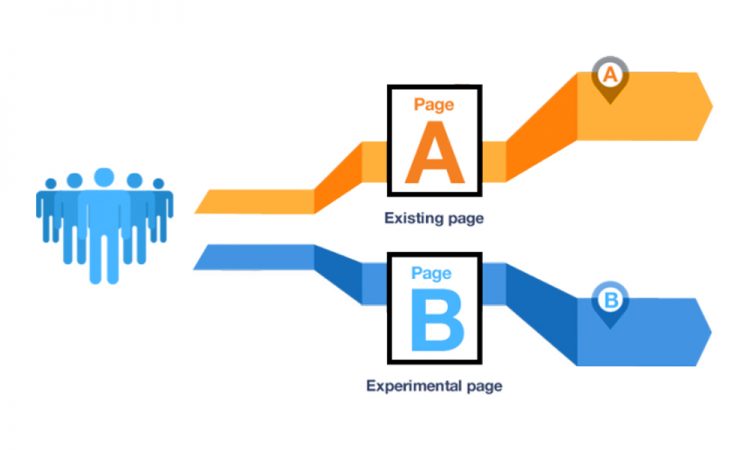
In the third phase, what we’re doing is we’re not just blindly going. Oh, okay, let’s change thebutton color. Oh, okay, let’s change the subject line and see how that changes things.
We take what we’ve learned form a hypothesis and say okay based on what we observed in phase one, we put together in phase two, we’re now testing idea versus idea.
We’ll run that. See how it performs. And then we’re fine and iterate as we go from there.
So, it’s a complex process. There’s a lot that goes into it and I think that’s where most people fall on their faces. They want it to be simple and they want it to be fast. And they don’t want to have to do their homework.
They want to just go and oh, increase conversions, of course, change the form, change the button, change the image.
But you have to do that whole process to really understand what’s going on.
Me: Yeah, I agree. Thank you for this answer.
How Much Time Does It Take to See the Results?
The question from me is
How much time does it usually take you from the very beginning of the project and when you see the first results like increase in conversions for your customers?
Joel Klettke: Yeah, I think there’s no hard answer to that. There’s, no like industry standard. Because that’s completely depends on the client’s ability, you know, how much traffic they have, how many conversions they see.
One of the most common mistakes is a company will make a change. And then they’ll get like a single data point of feedback. Like someone will say: “Oh, I don’t like that”. One person will say that.
For example, this happens to FPs and CMOS all the time. They’ll show what you’ve done to their board. One person on the board will go “Oh, I don’t like that”. But it really depends on a company.

You know, when I was working with HubSpot they could see changes rapidly. Because they get millions of visitors a month. They get thousands of conversions a day whether they’re microtransactions or big whatever.
But for another client, where they might see only 100 conversions in the month. It might take a longer period because you’re just not going to get the data in fast enough.
So, sometimes, yeah. There is kind of a mythical really immediate you know overnight change. Like “Oh we weren’t getting any leads, now we’re getting a bunch of lead.” This is really good. I’d say that’s usually much rarer.
So, it all comes down to how much traffic and how many conversions you see for you to be confident that the change that you’ve made is actually a result of the the changes you made and not some other external factors.
So, there’s no standards. I wish I could tell you “3 weeks or 3 months.” But it changes so much.
Me: Yeah it makes sense. Thank you.
How Do You Deal with Clients Who Screw up Your Copy?
So, the next question, funny question:
How do you deal with clients who screw up your copy?
Joel Klettke: Yeah, you know, I think there’s this is a tough one. Because, especially, the bigger you work with the more people’s opinions you have to contend with.
I think the biggest thing that copywriters don’t understand if they’re seeing this problem a lot is that dealing with people who screw up your copy starts way before they even see your copy.
So, for me, in the onboarding phase, before I’ve ever written a word for them I’m setting expectations.
So, I let them know just how this is going to go. Here are the phases I’m gonna go through. Here’s the research we’re gonna do together. Here’s why we’re doing all of that.
So, the first thing that I do is I try to get all of the stakeholders in the project involved in that research phase.
And when I’ve completed the research phase again before I’ve written anything for them. I get us to sit down and talk about it. And talk about what we see and why, you know, we’re gonna make the changes we’re gonna make. Get them on board.
Now that’s not practical in companies, where everybody’s really busy and they’re geographically dispersed. So, one of the things that I’ve done over the past few years is I record a video of myself talking through the research, talking through my thinking.
And I send it to them and I say “Listen, watch this, you have to watch this. If you’re gonna bring feedback to the table later, I’m gonna ask you: “Did you watch the video?” If you didn’t watch the video, I’m gonna send you back to the video before I make any changes for you.”
And that’s for me that’s in the contract that they have to spend the time looking at it.
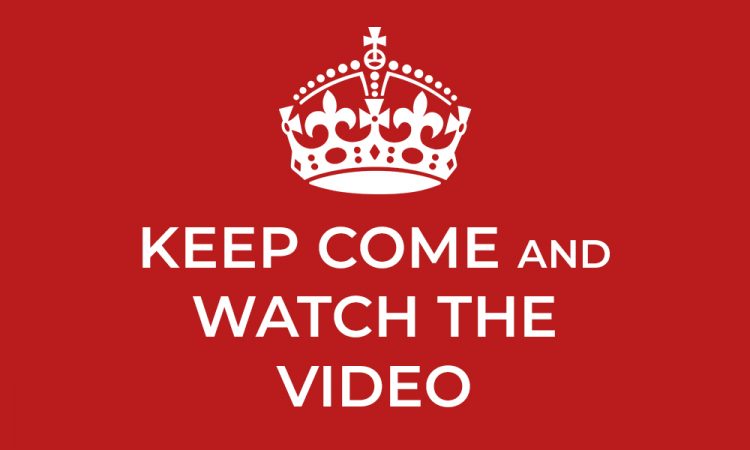
Because that way when they’re looking at my copy they’re not arguing from the point of: “Oh, I don’t like those words, oh I don’t like that phrase.” Now we’re looking at it through the same lens of rationale. They can disagree with my thinking, they can say I don’t agree with what you think the core problem is and I disagree with this data.
But, I always take it back to the data, the research. That being said you can do all of that and still have people disagree with your copy. It happens all the time. But when it comes to that.
I mean a couple of things that I do the first is I never send my deliverables in an editable format. I don’t send a word doc, I don’t send a G-doc I send a PDF.
So, I make it harder for them to edit, harder for them to go make changes by themselves.
If they want to change something we have to have a talk about it.
And that simple thing of changing the format I deliver and it means that there’s more discussion around it.
But in the end, if someone’s really insistent to think if one of two things happen. You guys say “Okay listen, you disagree with what I’m putting on the table. Let’s test it. So, let’s take your idea, let’s take my idea, let’s put them against each other and see.”
Because I’m not arrogant enough to think that I’m you know Mr. Genius and I always get it right.
So, let’s test them, let’s see. If they don’t want to do that. Then usually you know that the mindset you have to have is “Am I being paid enough to argue with you? Am I being paid enough to do battle with you? Or I might you know so I’ll give them what they want.
I’ll say: “Listen I’m gonna make the changes you want. I’m getting to do exactly, what you’re asking for but I’m washing my hands of this.”
So, if this copy does really really well. I’m not taking credit. If this copy bombs, I’m not taking the blame.
So, there’s no perfect system but the best thing you can do is anticipate it. And know that people are gonna push back and start the process of setting expectations from the very beginning. Even as they’re just coming to you asking maybe to hire you or other pro website copywriting services.
What Approach Do You Use to Create a Persona?
Me: Okay, thank you. One more question. This one comes from Ruslan:
What approach do you use to create a persona and what questions do you ask during your interview?
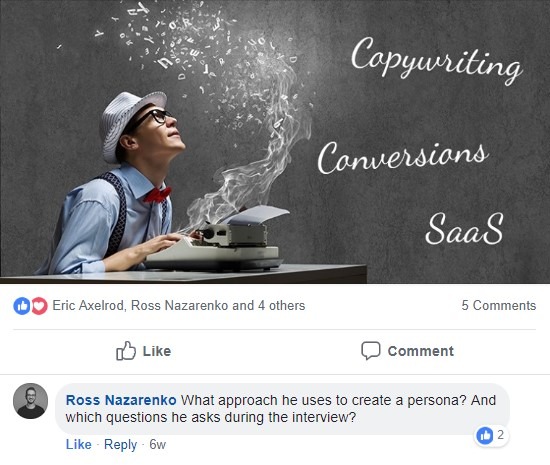
Joel Klettke: Well, a good question. So, I don’t love a typical persona. I think a lot of the times when companies create personas, they’re picturing of who they wish their clients were instead of who their clients actually are.
And, so, the first thing is if you’re gonna go, you know, about the task of creating a persona I’m glad that Ruslan asks what questions can you ask them. Because the first mistake is creating personas without ever talking to your customers. Just saying “Oh, we think it’s technological team and he likes this and this.” No you’re just making crap up about it.
So, with the questions that you ask and I’ve talked a lot about this in previous conference, talks and I’ve written about it on my blog. The format that I follow is BDA. So, when I’m asking questions ask them in a before during and after format. And I’m interviewing people at different stages or different types of people.
So, I’m interviewing my happy customers to understand why they chose me. And the BDA question I might ask them is: “What does success look like in your road?
And that practice is the conversation by saying “Okay. Here’s what this person is being measured against here’s the pressures they’re under or the things that they’re being weighed against.”
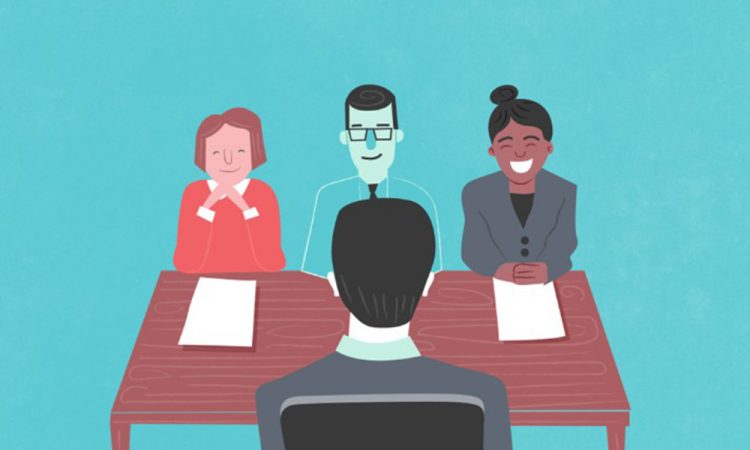
And once you’ve made it about them. Then you can start asking them questions like
- “What was going on in your life, that led you to look for a solution like ours?”
- “So, what was happening in your life, in your business that sent you looking for someone like us?”
And that gets them. You’ll notice I’m not asking yes/no questions. I’m not asking “Are you a man? – Yes. Are you a woman? – Yes.”
I’m not asking yes no because that’s not that informative.
But that stuff can come in later. What I’m asking questions about their experience. You want to turn them into a storyteller. And when they start telling you and explaining their experience that’s where you get a lot of the details, the values, the anxieties, these objections.
So, you know before questions are all about what was going on there, the pains, the triggers to send them to.
During questions are all about the experience of using the product. What’s been most valuable to them? What’s been most important to them? How do they use it day to day?
Then come after the results questions. And a big mistake is addressing them like “What is the result you’ve seen?”
The most important questions you can ask are like “Why is that important to you?” “How is that impacted you get today in the business? “How has that impacted your boss?” “How’s that impacted other department?”
And then you get a more full-fledged story of who this person is. What they really want. How they make decisions. What results they look for. It all kind of comes together nicely there.
Now I’m not saying that the traditional persona stuff is not valuable. So, things like demographics things like what tech they use. Things like, you know, what they do outside of their work life. That can all be really valuable too.
But when it comes to conversions and running for conversions, the ammunition I need to get that done is pain points, anxieties, desired outcomes, priorities. I need to get that stuff. I need to get it in their own words that’s how I build out kind of my picture of who these people are.
So it’s not a stereotypical persona but from what I do it’s infinitely more valuable to me than just knowing. “Oh, it’s a soccer mom from Tennessee drives up forward and makes $10,000 a month. Whatever. Because I’m interested in motivation not just kind of the surface stuff of who the person is.
Me: Okay, really great answer.
What Top 3 Mistakes Can You Name in Creating Copy for SaaS Companies?
Another one comes from Margo. She asks
What top let’s say three or five mistakes can you name in creating copy for SaaS companies?

Joel Klettke: Oh, man. There’s a lot of what I see really common mistakes.
Probably the number one thing I see most often. A lot of SaaS companies do a fabulous job of explaining, on their homepage in the intersection. They do a great job of explaining what the product is but they do a terrible job of explaining why anyone should care.
So, it’s like here’s a CMS for small businesses and that’s the whole hero section. It’s like that’s great but there are hundreds of CMS tools for small business.

So, you might rank your website on the first page of Google for that keyword. Your SEO might be really happy with that. But you haven’t given people a reason to care, you haven’t differentiated, you haven’t made any promise. So, in hero sections on home pages and landing pages are probably, where most companies I see fall short. Almost every time I’m working with companies to revamp that and fix that.
I think another really big mistake that I see is lack of specificity.
So, a lot what I mean by that as a lot of companies when they talk about the benefits by they’ll say something like “We save you hours of time so you can do the things that matter.”
That is so unspecifiс. It’s totally meaningless. What are the things that matter? How do you save them time? What tasks do you make simpler? How do you make that simpler?
And that’s why I need that ammunition on pain points and anxieties. Because when I know specifically how they describe it, what they care about, what tasks are they responsible for, what they measure their success against me, I can do better than just say “save time and money”. I can do better than just say “easy to use”.
I can talk about what specifically is easy to use. Why that’s gonna make their life better. I can give so much rich context.So, specificity is probably one of the most common things that are neglected. You know, I see that almost every client I work with, almost every client I help, they’re not specific enough.
So, here are sections that don’t explain the why. Specificity.
And the third one I would say pricing pages.
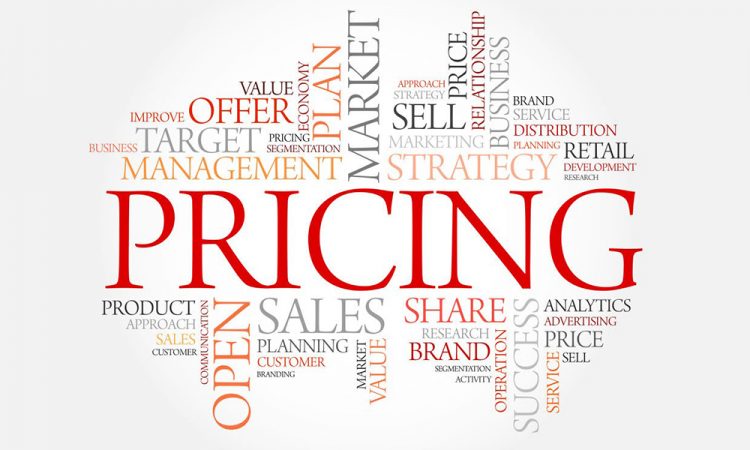
Pricing pages are hard. They’re hard to do well but they’re often neglected. When I get brought in most people want to work on like the sexy parts of the site: the homepage or the features page. They want to work on, you know, like a manifesto. All this other stuff.
It’s like okay that’s all well and good. But when we look at reported user sessions when we look at, you know, the landscape of their clientele more often than not where things are failing is on the pricing page.
So, whether that pricing just isn’t clear, whether they made it super convoluted where it’s like 18 different plans and it’s impossible to know which is which, whether they’ve done something as simple as not explaining which plan is ideal for which type of customer.
There are lots of ways of what pricing pages people want but almost nobody wants to focus on them. They almost don’t think of them as copywriting because there are numbers, put the price up and people will buy it.
So, probably specificity and no attention paid to how the pricing page performing. Those are three of the most common that I would put out there.
Me: Okay, thank you. Another question from Margo she asks:
What is your life hack?

Joel Klettke: My life hack… Gosh, I wish I had a good one.
I mean… we have a four-month-old son.
I’m only just kind of like finding the time to start exercising again. But I think when it comes down to it, when I’m really like performing at my best in my work in my life exercise is a part of it.
And it’s not just you know like how you look it’s all about how you feel. And my brain processes things better when I’m regularly exercising, my energy levels are different when I’m exercising.
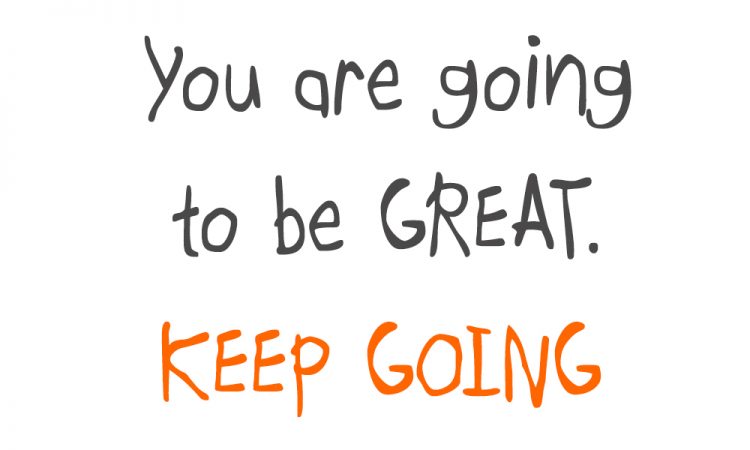
When I get frustrated because everybody gets frustrated, everybody gets stuck going and walking around the block or doing some exercise usually helps me get unstuck.
So, it’s not like there’s no big secret to it. The hardest part of it is just being regular and consistent discipline with it which I haven’t been… It’s hard with a little baby but…
Yeah, when I’m doing my best work it’s also there’s also a good chance that I’m exercising and making that a priority in life.
Me: Okay cool thanks.
What Is Your Favorite Copywriter?
And another one comes from me:
What is your favorite copywriter?
Joel Klettke: I think for me, you know on a personal level, I think Joanna Wiebe. She is from Copy Hackers. She’s someone who’s been influential in my career. She’s a friend, someone that I’ve been really proud to get to know and learn from.
She’s had an impact on the way, I write, the way I do business, the way I connect with people. She really is sort of the queen bee of conversion copywriting. There are other people you know, who would throw out names of classics. And all that that stuff is great.
But for me, you know, just a friendship I have how much I’ve taken away from from the way she thinks and writes and does business, Joanna would definitely be my top pick there.

Me: okay, cool. Thanks.
How Would You Approach Copywriting an Existing Website from Scratch?
Another question comes from Manuel da Costa:
How would you approach copywriting an existing website from scratch?

Joel Klettke: So, writing for a site that that doesn’t that doesn’t exist, writing for a brand new website, for something that has no history?
Me:Yeah, yeah.
Joel Klettke: So, it’s a different situation. You can’t do things like looking at recorded user sessions because they don’t exist. And you can’t do things like looking at analytics because it doesn’t exist.
So what you can do is talk to people. And, you know, if you’re brand new, if you don’t have a single customer, you’re not the first company or first person to solve the problems you solve.You’re just not. People have been dealing with that problem in some way, shape or form.
You might have a new way of solving. You might have a better way of doing it. But you’re not the first person to sit up and go “Oh, that’s important to fix.” And, so, what’s important is to look at “Okay, well, how have people been dealing with this to date?”
Well, have they been reading books? Have they been, you know, using a different type of service? Have they been using a different type of product? And one of the early things you can do is go read reviews or go read testimonials for those other things. And start learning from those. “Okay. Here’s how people talk about their problem. Here’s how people talk about this particular solution.”

Here’s where my solution differs from those solutions. So, you can start seeing like “Okay, here’s what I can emphasize.” If you go read negative reviews for things that you know try to solve that problem, now you can go like “Oh, these are pain points, these are things that people aren’t happy with.” The current way of solving this problem. I can position myself against that.
So, you do the same kind of fact-finding. It’s just in a different way because you don’t have the same things available to you. I think the mindset you need to have is you’re never gonna hit a home run on your first go. You’re never gonna just like be perfect, sales page, website, advertisement, your first practice. It’s not gonna happen. There’s always going to be new things to learn, new things to incorporate, shifts in the market, shifts in thinking.
So, you can start with looking at those competing products. You can interview people who might be interested. You can survey people who might want to be leads one day or people you know have that problem. And then just draw on things that are kind of known and proven as a baseline. So, if you don’t know where to start it’s not a bad idea. Most of the time with clients I caution them against copying what’s out there.
I say like “Okay just because this company is trying this – they’re guessing too. You don’t know if they know what they’re doing.” When it comes to putting something brand new together draw on things that have been done in the past. So, you know that the typical flow of a landing page needs to answer the following questions in the following order.
- What is it?
- Why should I care?
- Who else cares?
- If I do care like them what do I need to do about it?
So, that’s we can draw on some of these formulas like pain, agitation, solution. That’s where you can pull some of those stuff to get your baseline together.
Just do that with the knowledge that it’s gonna change. It’s gonna have to change. You’re gonna be iterating and improving it over time. The most important thing to do is just launch it. Do some research, get some ideas together, get them down put it together, launch it.
So, you can start seeing how it performs and learning what you got right learning what you got wrong.
I think a lot of people get paralyzed hoping and waiting. They like “Oh, I don’t want to spend the money to put something out there if it’s not entirely perfect.” It’s never gonna be entirely perfect.
So, put something together with as much information as you have today. And make it better as you get new information tomorrow, and the next day, and the next week and the next one.
Me: Cool, thanks!
Copywriting Formulas for SaaS Marketers to Pay Attention to
Another one comes from me:
In this answer you mentioned copywriting formulas. Could you share please, let’s say, five formulas for SaaS marketers to pay attention to?
Joel Klettke: The thing I wanna caution against is a lot of people looking formula is like silver bullets.
They look at them like the answer. So, the first thing to know is that the formula you choose it’s not just like “Okay, put your hand in a hat and pull out a formula and write to that.”
They’re all very situation specific. They’re all specific to like levels of awareness.
So, it’s not necessarily a formula but I think one of the first things that more SaaS need to pay attention is to the stages of awareness.

Eugene Schwartz is a kind of the guy who talked a lot about this. Again if you search five states of awareness Eugene Schwartz, you’ll find topics on it online and you can pick it up.
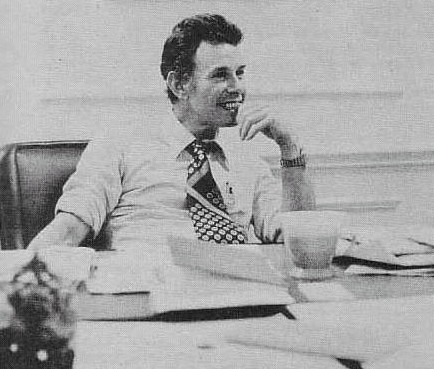
But the formulas you use or you thought you take should be entirely rooted or at least informed by how a living prospect is.
So, if they are at the stage where they are most aware. So, they understand a ton about you already they already know a lot about the problem, they know a lot about the other solutions out there. Then you know your formula is to just tell them the deal. And just say “Okay, here’s the price or here’s the discount, or here is the whatever.” Because they don’t need more information to make that decision they just need an incentive.
If you’re dealing with someone who is maybe problem aware. So they know they have an issue they know they have some tension that they want to resolve.
They know, they need something to change. But they’re not aware of the solutions that are out there. They’re not aware of the landscape of things available to them. Some might not even know that like a solution is possible.
Then the formula you use will change. So, in that situation, you need to show them you empathize with them, so that’s where something like pain, agitation, solution can work really well.
Because there you start with their pain, you agitate their pain, and you kind of show that we understand the problem you have. And then you can lead them into a discussion about here’s the solution and why the solution is good.
So, different formulas are gonna work in different situations. If you google Joanna Wiebe or copy hackers copywriting formulas, she’s put together like a huge post with hundreds of different formulas you can test and try, formulas for headlines, formulas for landing pages, formulas for email series.
So, there are loads there. And I think rather than kind of just put a handful on the table I would say start with awareness levels. That’s gonna be way more valuable to you.
Then look up that post by Joanna and as you know more about your customers, you’ll start to see which ones might apply best to you.
Me: Cool, thanks.
What’s the Most Memorable Order or the Most Memorable Customer for You?
So, one more question from me:
What is your most successful piece of work that you’ve done for your customer that makes you proud? What’s the most memorable order or the most memorable customer for you?
Joel Klettke: Yeah, obviously the HubSpot project was a pretty big success. I mean doubling conversions was huge.
I can’t pretend that you know I did that alone.
There’s a lot of factors. A team on their side. And lots of changes that were made. But in terms of just like raw result that I had such a huge movement for such a big company was pretty monumental.

I think on a smaller scale the one that I’m pretty proud of. I didn’t write a word. I said “Here are the problems I see” and gave them recommendations for fixing it. And that I was that online divorce website.
So, I did an audit for them, went through and shared some fascinating stuff like the men versus women thing. We looked at the time of day and how people converted.
And it was super fun for me. Because it was like a mystery. It was just like “Why is this happening? And how is this happening? How can you fix it?”
And that’s the part of what I love at my job is every client is a little bit like a mystery. There’s a little bit of creative problem-solving. But with that divorce agency I didn’t even know they’re not a divorced agency but online divorce facilitator. I didn’t even have to write any words for them I just did this audit. And they implemented based on what I recommended. And you know you asked how long it takes to see a result. Those guys started adding like hundreds of dollars to the revenue within a week.
There was a near instant change there. And that was really exciting.
And they were really excited because I think they saw there was potential that this stuff could work. But when it works so quickly and some tangibly. The comments that I got back from them were things like “You understand our business as well as people who’ve worked here for the past five years.”
And to me that was really gratifying and really memorable.
It was a real validation that the process I described earlier those phases the research I do.
Most validation that yeah, this stuff works. This stuff is important. It’s not voodoo. It’s not deceive. It’s not black magic.
Just knowing who your customers are and how they behave. And then making changes based on that is what this is all about.
So, I would say kind of those two you know have been sort of the most memorable or the biggest or the most exciting for me.
But every project I work on, I learn something new. I love when I get a client who’s excited about this and trusts the process.
So, while those who might be the ones that come to mind right now.
I love what I do and I love doing this stuff. Because it’s so fun just to see, when you understand things, new tests, things you make changes and what the results can be.
So, I think it’s a really special feel to work in and I hope to work in it for a while.
How Did You Understand that You Need to Focus on Copywriting?
Me:
How did you understand that you need to focus on copywriting? how do you come to this?

Joel Klettke: Yeah. I used to work for an SEO agency, a digital marketing agency and I was doing SEO. And I always know enough I always loved writing. But I never saw business in it. I didn’t want to be a novelist. I didn’t want to be a journalist. I didn’t want to write technical papers. And somehow the whole world of copywriting was invisible to me. Even as I went through university and and then you know I saw a little bit of it.
When I took marketing classes and I thought “Okay, that’s kind of interesting.” But I still didn’t see it as a viable career. And then when I was working for this digital agency.
That’s when my eyes kind of opened. Because they knew that I loved to write and so they started selling just a little bit. I’ve read a web site here. I read an ad campaign there. I’ve read blog posts. I saw off for the first time really okay here’s this practical application of the thing I love to do.
And in working for the agency I think the big thing that I I took away from that is just an analytical side. So, I learned how to use Google Analytics. I learned some of the more technical know stuff. That goes into what I do now.
It’s around 2013, I saw the whole industry. And I’m starting to pay a lot more attention to content, to writing, to the value of the written word. Because, before then the internet had been kind of just like a Wild West. Like 2008 and earlier it didn’t really matter how good your writing was.
You could rank brilliantly with crap content. And so in the context of SEO people started paying attention to the value of this stuff to them. And I thought okay, here’s this career where I can match like the creative elements. I love analytic stuff, I’ve learned to love, and I can do work that I’m really excited about it. So, when I left the agency in 2013 I was doing a lot of ebooks and blogging and more the content side of things and I liked that a lot.
But when I came across kind of Joanna Wiebe’s work I saw that the direct response world didn’t have to be this kind of greasy, manipulative, pushing supplements, and all that stuff.
I had a bad taste in my mouth for direct response before. But when I saw Joanna’s work and I saw that “Hey, this stuff has applications for software and b2b corporations.” Then I thought “I’m gonna do this.”
And I continue to just fall in love with that part of it and to explore other things as well. And you know what if I ever fall out of love with the conversion copy stuff, there’s no shortage of fun and, you know, challenging and effective things you can do with language.
So, I’m excited too. I hope, I get to kind of write or be involved in writing for the rest of my life. Because I really just marvel at the fact that the things we say and write and the way we communicate and have such a profound impact beyond just business and into the rest of our lives.
So, that’s the very long answer to a very simple question. But yeah it was always a passion and, finally, I saw it could be a business too.
Me: Сool. Great. Victoria wrote: Wow, I have a very important question:
Where do you live and is it possible for you to come to a full final b2b marketing conference? It will take place in Spain
So you live in Canada Calgary, right?
Joel Klettke: Yes, I am a Canadian. I live in Western Canada, in a city called Calgary. I love to speak. I love to travel. I’ve had the privilege of speaking at a fair number of kind of conferences and events. So, Spain would be a blast to go to. I’m certainly not opposed to that idea.
Me: Yeah, I can actually connect you guys and you can just negotiate about that. No problem.
Fine. So, thanks a lot for this great interview.I enjoyed a lot interviewing you and hearing answers from you. So, that was really cool. Thanks.
Looking forward to having some interviews maybe and meetings with you in the future.
Joel Klette: Thanks. I appreciate all the questions. There are really good smart questions. So, you know I think the last thing I’ll say to those, who now watch or to listen.
Everybody wants writing to be purely creative. And it’s a beautiful creative thing.
Where it starts being powerful is where you learn to research, you learn to analyze, and learn not to kill your creative spirit with that, but to marry the two.
And, so, if you want to be a really great copywriter, if you want to be a really great conversion optimizer, learn how to take that creativity and channel it with analytics and data.
Not stop it, not crush it, but channel it. And that’s gonna have a huge difference for you.
So, thank you so much.
Me: It’s really great tip from you. Thank you.
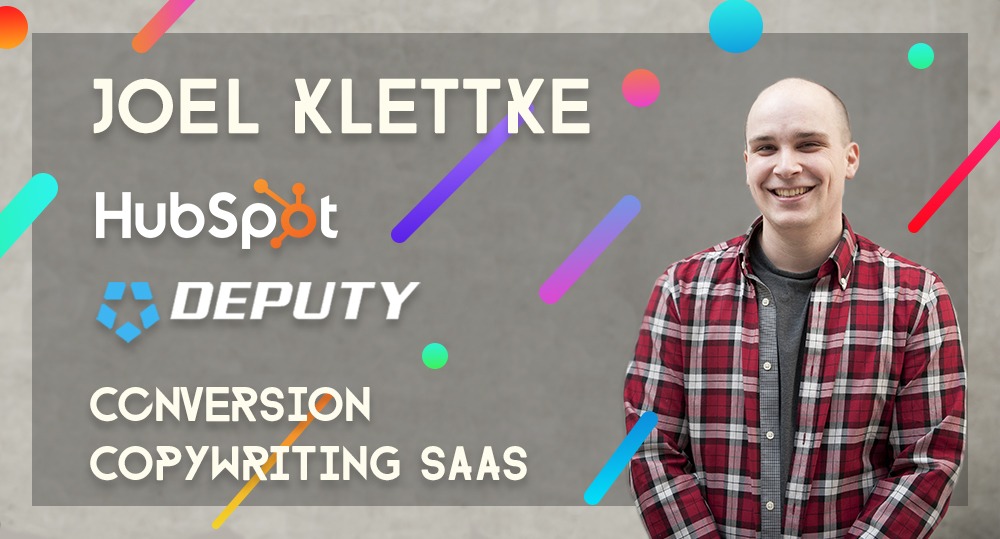



 (5 votes, average: 4.80 out of 5)
(5 votes, average: 4.80 out of 5)
I completely agree with the fact that some clients tend to be too hasty when it comes to implementing problems – they panic, and they think a complete redesign of their online properties are needed in order to increase conversions or stop a decline in sales. I have found that many times the site’s design is really great, but the copy on the site is what drives visitors to that back button – ultimately causing them to land on a website that could have a weaker design, but a much more convincing copy.